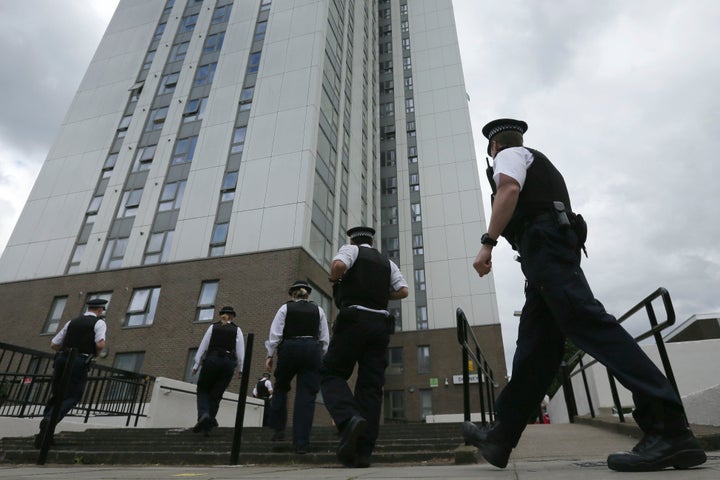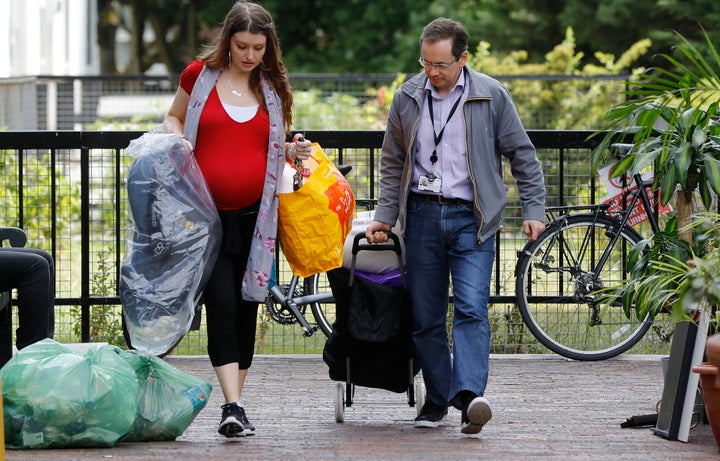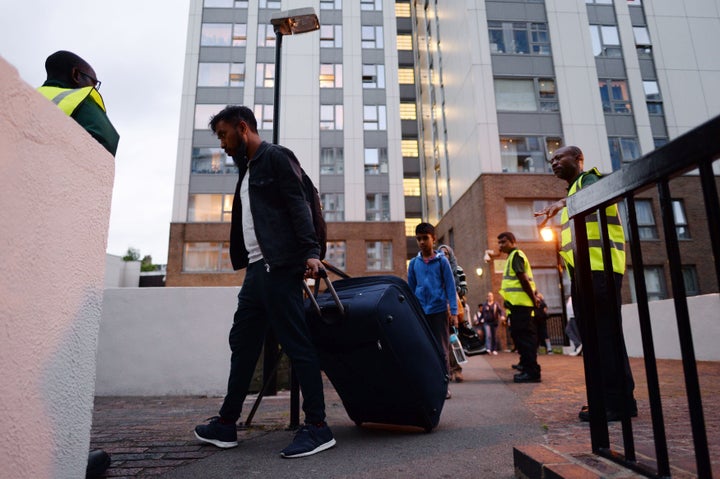A north London council is suing its contractor for £130m after a series of fire safety risks saw 800 homes hastily evacuated in the wake of the Grenfell Tower blaze.
Camden Council is seeking £130m from Partners for Improvement in Camden (PFIC) and its principle subcontractors – including Rydon, which was responsible for the infamous Grenfell refit – that previously had responsibility for the refurbishment and maintenance of the five towers making up the Chalcots Estate under a private finance initiative agreement (PFI) with the council.
Rydon did not immediately respond to a request for comment.
The mass evacuation – believed to involve 4,000 residents – occurred in June 2017, with the majority of those affected saying they had received little or no warning they would have to leave their homes. Some said they only learned they would be leaving by watching the news.

Speaking at the time, Michelle Urquhart, who had been living in the estate’s Bray tower, described the experience as “frightening”.
She said: “One man in a suit said to me, ‘you can’t stay here tonight’.
“I’m so angry because we had the meeting with the council last night and they tried to reassure us.
“We have been living in these flats for the last 10 years with this cladding.”
Matiyas Solomon, 40, was visiting the family of a Grenfell Tower victim, his sister’s friend, when he discovered his home was being evacuated at around 9pm.
After registering at a nearby leisure centre with his niece and nephew, where residents were bedding down in close proximity with just an “air mattress, a pillow and blanket”, he decided to find accommodation elsewhere.
He said: “It’s very compact, there are old people, kids, they have food and water, no one is happy.
“It’s too late to tell these people, they should have had in the morning time to decide.
“They [the authorities] had about nine days, they know all what is happening. They should have decided early or in the morning.”
A review of the evacuation, commissioned by the town hall and led by an independent expert, was released just over a year after the event.
It revealed that an inspection by the London Fire Brigade (LFB) days before had identified a number of faults, prompting a threat of legal action if Camden did not “voluntarily” evacuate the blocks.
But the report was criticised for apparently seeking to shift the blame to LFB.
In comments reported by the Camden New Journal, leader of Camden Tories Councillor Oliver Cooper said: “It’s irresponsible for Camden to throw the fire brigade under the bus when the council singularly failed to remedy any of the safety failings it had identified and failed to make any preparations in the event that the fire brigade uncovered those failings.”
The cladding used on the outside of Chalcots buildings was believed to be similar to that used in Grenfell Tower, which suffered a devastating blaze in the early hours of June 14.

The cladding was found to have contained a flammable internal structure, and is thought to have been responsible for the rapid spread of the flames up the building.
Fire inspectors also deemed the buildings seriously unsafe because of problematic fire doors and concerns over gas pipe insulation.
Camden Council initially said just 161 households in the Taplow building on the estate were being “temporarily decanted” to allow up to four weeks of work to the building.
But council leader Georgia Gould later told Sky the number had increased to include all the buildings, with a rest centre set up at Swiss Cottage Library.
There was confusion on the ground at the estate as people were told to leave as darkness began to fall, with some leaving with belongings in suitcases and carrier bags.

By the end of July, the majority of residents had been given the all-clear to move back in.
Specifically, the claim has been submitted against the consortium Partners for Improvement in Camden (PFIC) – currently in liquidation – and Rydon Construction Ltd, Rydon Maintenance Ltd, Faithful + Gould Ltd and United Living South Ltd.
The council is seeking to recover costs in relation to the evacuation, the employment of fire marshals and security staff during the evacuation and beyond, its repairs to make good inadequate internal fire stopping, inadequate fire doors and other serious defects inside the Chalcots towers and the removal of combustible aluminium composite material cladding from the blocks’ outer façade.
A Camden Council spokesperson laid blame squarely at the feet of the contractors.
“We were let down by PFIC, Rydon and other contractors,” he said.
“The PFI agreement for refurbishment and maintenance of the Chalcots Estate was entered into in good faith and fundamental to this was our expectation that the Chalcots towers would be safe for our residents. We should not have been put in a position where we were left with no option but to evacuate residents from their homes on a Friday night.
“Our absolute priority is the safety of our residents so, upon discovering serious deficiencies in the work and materials used by our contractors, we stepped in with new contractors, to complete works that would allow Chalcots residents to start to return safely to their homes within four weeks and, within six months, had fully removed cladding from the towers.
“The costs of the supporting residents during the evacuation and level of work required at the Chalcots made a major impact on our reserves. Clearly, it would not be right for residents and, by extension, the public purse, to foot the bill for what has been a private contractor failure.”
HuffPost UK has approached the subcontractors for comment.

